Lifeline Systems 324PHB Personal Emergency Response System (PERS) Button User Manual Luxury A5 BW New branding 2015
Lifeline Systems Inc Personal Emergency Response System (PERS) Button Luxury A5 BW New branding 2015
User Manual
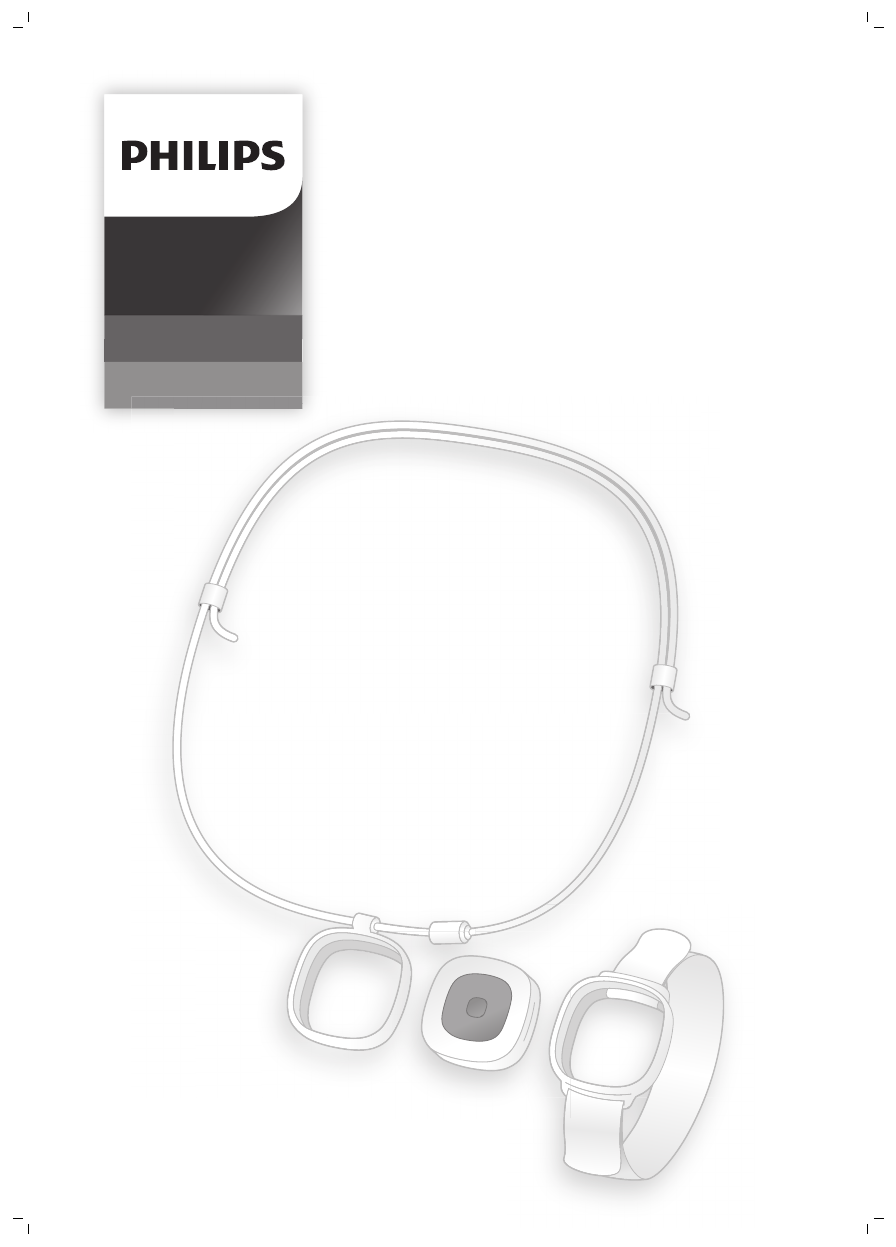
324PHB
324PHW
Personal Help Button
Instructions for use

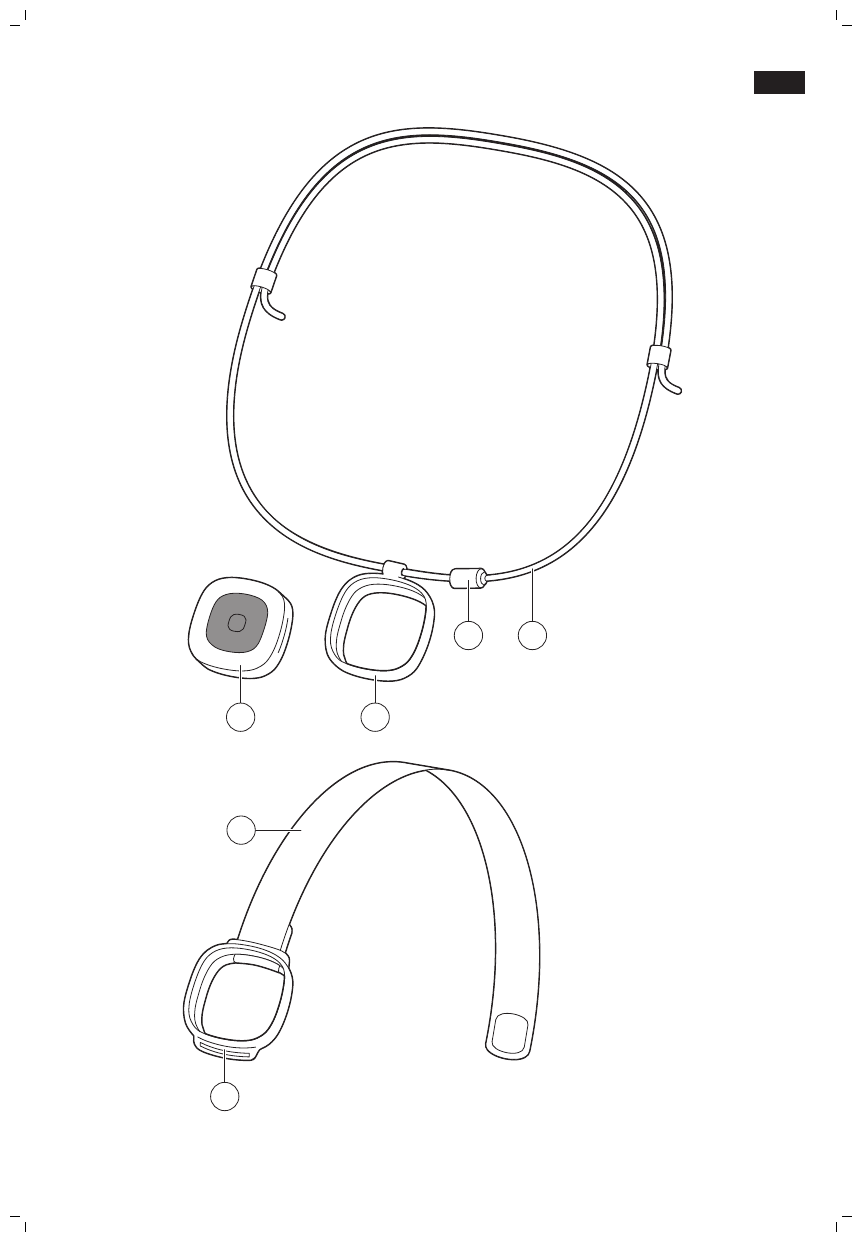
Fig. 1
5
2
21
3 4


English
Contents
General description (Fig. 1)____________________________________________________________________ 6
Introduction ___________________________________________________________________________________ 6
Intended use__________________________________________________________________________________ 7
Explanation of warning symbols______________________________________________________________ 7
IMPORTANT SAFETY INSTRUCTIONS________________________________________________________ 8
WARNINGS____________________________________________________________________________________ 8
CAUTION_______________________________________________________________________________________ 8
SAVE THESE INSTRUCTIONS_________________________________________________________________ 9
Preparing for use______________________________________________________________________________ 9
Using the device_______________________________________________________________________________ 9
Cleaning_______________________________________________________________________________________ 11
Storage________________________________________________________________________________________ 12
Maintenance__________________________________________________________________________________ 12
Replacement__________________________________________________________________________________ 13
Disposal________________________________________________________________________________________ 14
Assistance_____________________________________________________________________________________ 14
Troubleshooting_______________________________________________________________________________ 15
Frequently asked questions__________________________________________________________________ 16
Industry Canada Compliance Statement_____________________________________________________ 17
FCC Compliance Information_________________________________________________________________ 18
Radio interference_____________________________________________________________________________ 18
Specifications__________________________________________________________________________________ 19
Explanation of symbols_______________________________________________________________________ 19
General description (Fig. 1)
1 Personal Help Button
2 Personal Help Button holder
3 Neck cord breakaway feature
4 Neck cord (pendant)
5 Wristband
Introduction
Thank you for choosing Philips Lifeline. The Philips Lifeline service
allows you to summon assistance when you need it by pushing the
Personal Help Button.
Note: If you home communicator has already been set up and you are
replacing an existing Personal Help Button, follow the instructions to
activate your replacement button (see 'Replacement').
6English
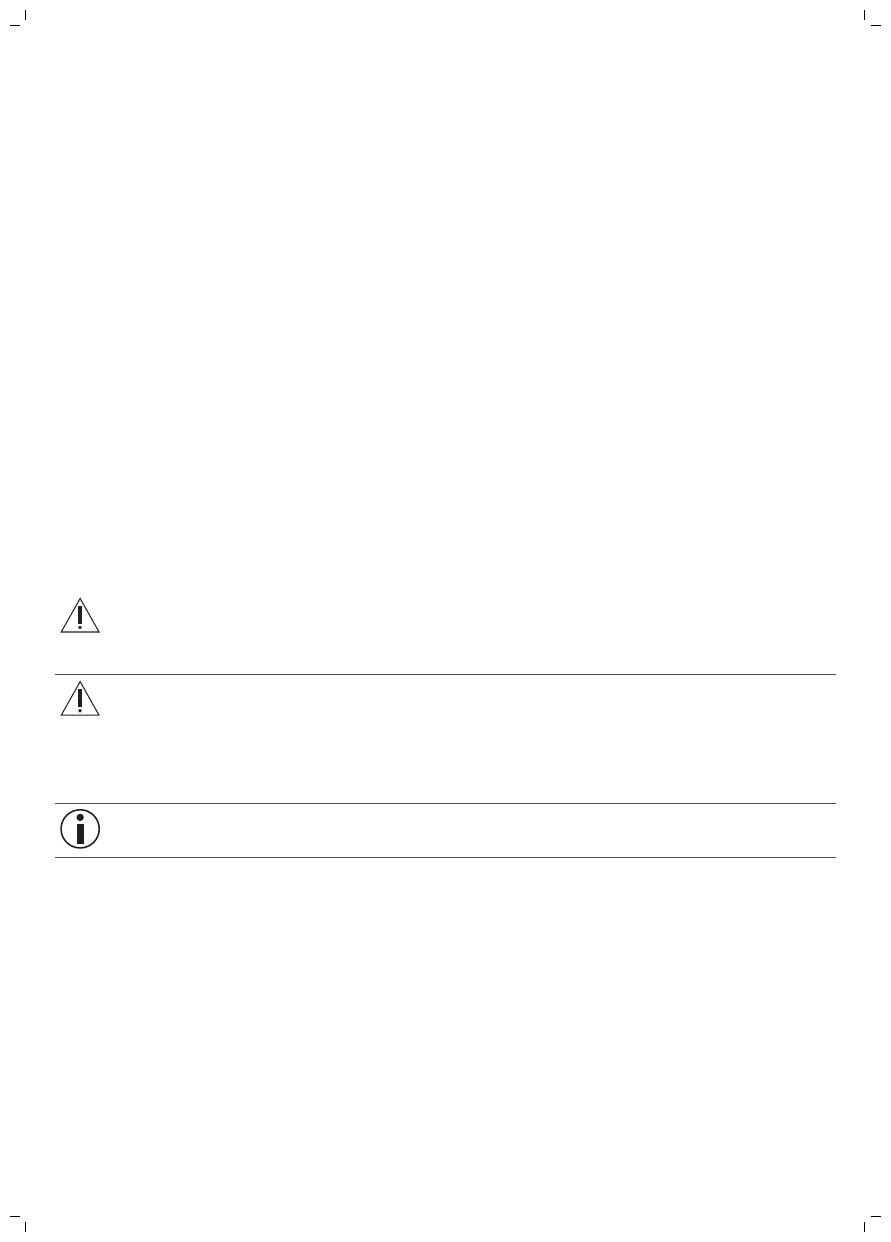
Compatible Communicators
When you press your Personal Help Button, it sends a signal to the
home communicator. The signal is sent with radio frequency (RF). The
Personal Help Button needs to be used with a compatible Philips
Lifeline communicator. This Personal Help Button is compatible with:
-6900AT, 6900, 6800AT, 6800, 6700 and 6600 series Philips
Lifeline HomeSafe communicators.
Intended use
The Personal Help Button is a body-worn personal device to manually
signal for help using the Philips Lifeline Medical Alert Service when
within range of a compatible Philips Lifeline Communicator or
Receiver. It is intended to be used by seniors and/or adults with
medical conditions or disabilities, living in a private home or residing in
an assisted senior living community.
Explanation of warning symbols
The following warning symbols are used in this user manual.
Warning A WARNING alerts you to a potential serious outcome, adverse event or
safety hazard. Failure to observe a warning may result in death or serious
injury to the user or patient.
Caution A CAUTION alerts you to where special care is necessary for the safe and
effective use of the product. Failure to observe a caution may result in
minor or moderate personal injury or damage to the product or other
property, and possibly in a remote risk of more serious injury and/or cause
environmental pollution.
Note A note indicates usage tips, additional information or a note.
7
English
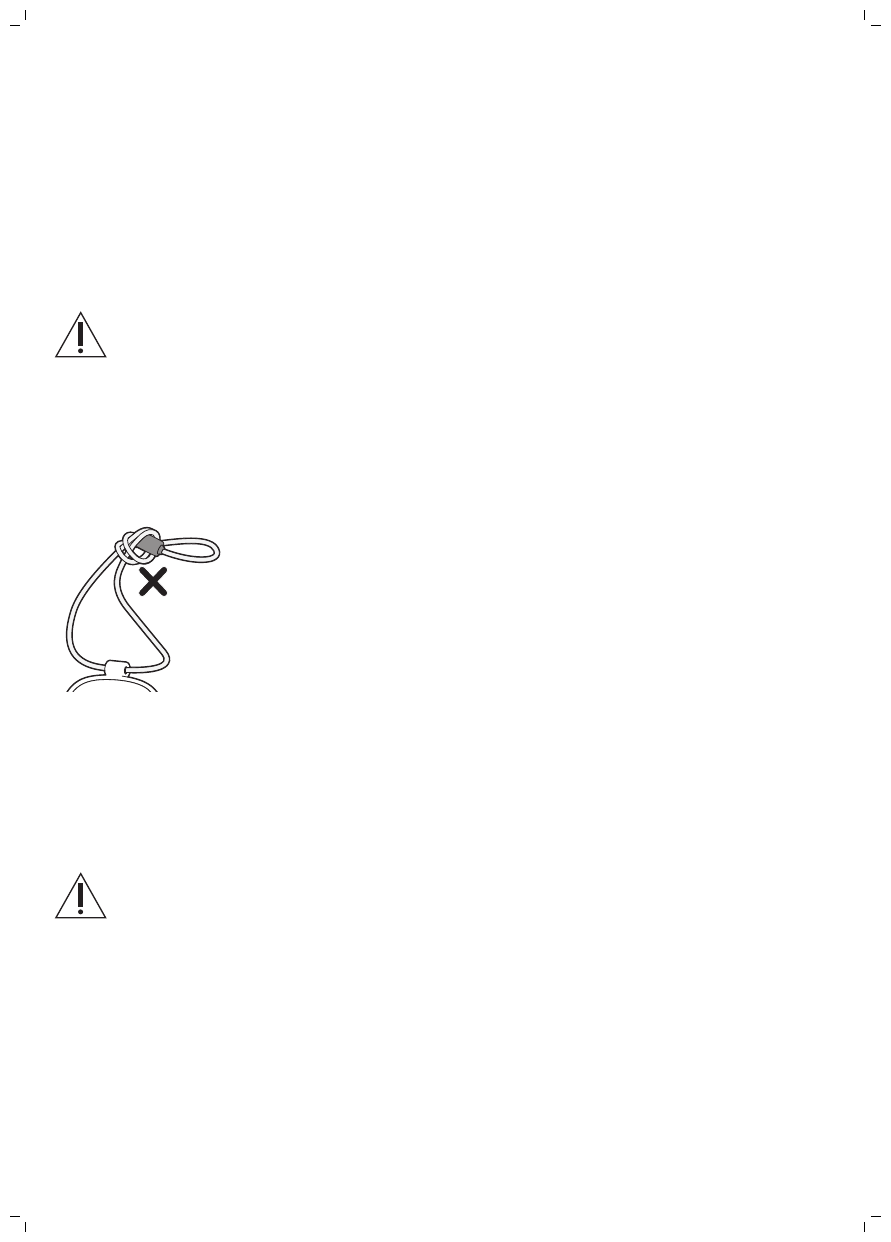
IMPORTANT SAFETY
INSTRUCTIONS
Read all instructions before using this device
WARNINGS
-Any cord worn around the neck can pose a strangulation risk,
including the possibility of death and serious injuries. This risk may
be of more concern to wearers in wheelchairs, using walkers, or
using beds with guard rails, or who might encounter other objects
with which the cord can become tangled.
-Do not use any neck cord other than the one provided. Other neck
cords may not provide the feature to break apart. This may increase
the risk of strangulation. If your neck cords needs replacement,
check the support section in this user manual for information.
-Do not tie a knot in your neck cord. This may prevent the
breakaway feature from working properly.
-Only use the accessories and parts authorized by
themanufacturer. Other parts may cause damage to the device or
injury to the user.
-Portable RF communications equipment (including peripherals
such as antenna cables and external antennas) should be used no
closer than 30 cm (12 inches) to any part of the 324PHB and
324PHW devices. Otherwise, degradation of the performance of
this equipment could occur.
-Do not modify this device. This could affect the performance and
lifetime of the device and voids your warranty.
CAUTION
-When you wear the Personal Help Button, follow these instructions.
This is to reduce the risk of skin irritation.
-Wear the device on healthy skin.
-Clean the device often.
-Clean the skin underneath the device often.
-Always dry the device when it has become wet.
-Do not wear the device too tight, to ensure it is still comfortable
to wear.
-To avoid injury, be careful when you handle tools.
-Do not put your Personal Help Button in the dishwasher, clothes
washer or dryer. Remove your Personal Help Button from your
cloths that are being dry-cleaned.
8English
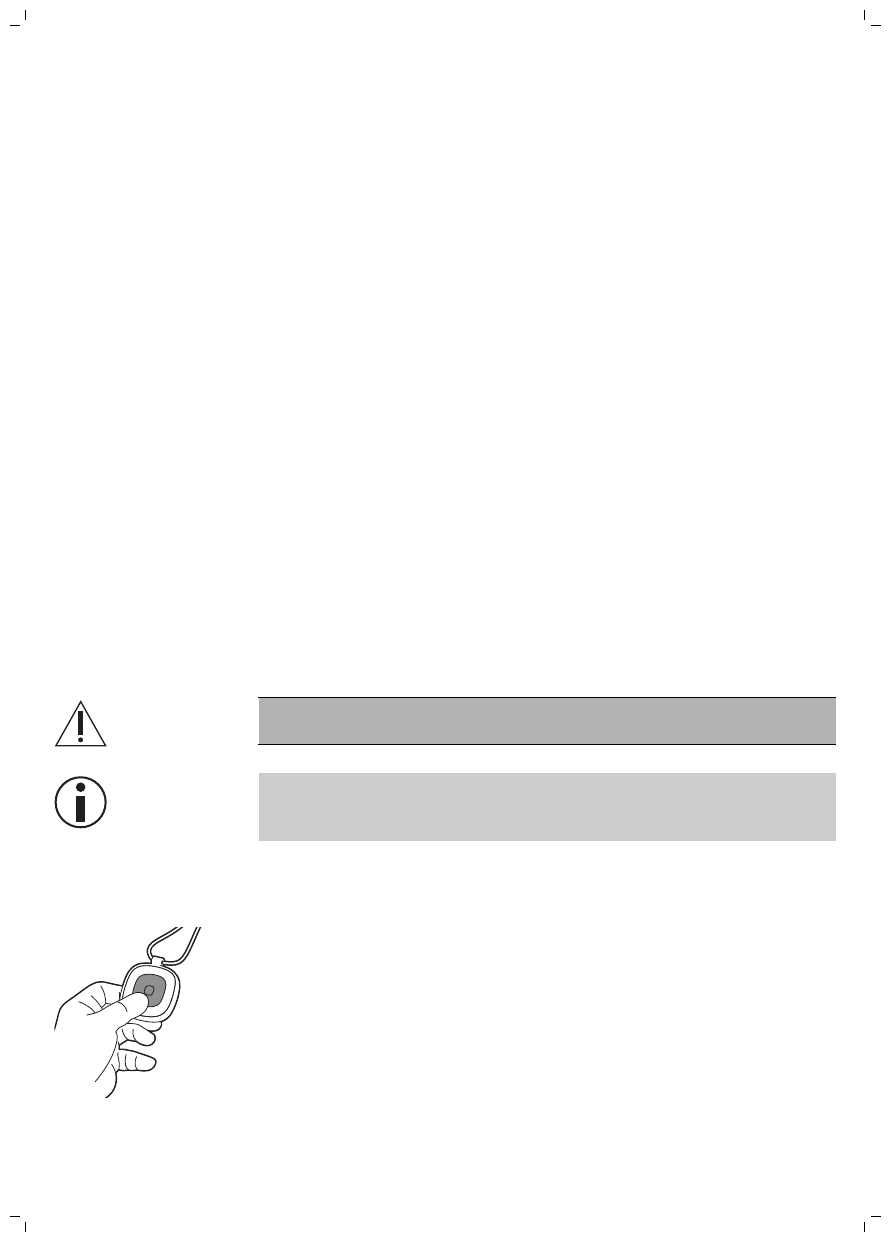
-The Personal Help Button will not work outside the range of the
Lifeline communicator. When you are out of range of the
communicator your help call might not be answered when you
press the button. It is important to test that the signal range covers
all areas of your home. Refer to the Lifeline Communicator User
Manual for instructions on how to test the coverage range.
-If your Personal Help Button is not set up in the correct way, your
help call might not be answered when you press the button. Refer
to the Lifeline Communicator User Manual for instructions on how
to properly setup the AutoAlert Help Button with the
Communicator.
SAVE THESE INSTRUCTIONS
Preparing for use
If you are new to Lifeline and need to set up your service for the first
time, refer to the Lifeline home communicator user manual. There you
can find instructions on how to properly set up the Personal Help
Button with the home communicator.
When you setup the system, be sure to test if your Personal Help
Button is within coverage range of the Lifeline communicator. It
should be in range in all areas of your home, such as the bathroom,
basement and garage. Refer to the Lifeline home communicator user
manual for instructions on how to test the signal range.
Warning: The Personal Help Button will not work when outside
the coverage range of the Lifeline communicator.
Note: The signal range may be affected by environmental factors,
including building materials, large masses covering the Personal Help
Button (e.g. a person falling on top of it) etcetera.
Using the device
Always push your Personal Help Button if you need help.
The Lifeline Medical Alert Service provides 24/7 access to Lifeline's
response center. To summon help, simply push your Personal Help
Button. This connects you to a Lifeline response associate.
What to expect when you push your Personal Help Button to call for
help (a help call).
1When you press your Personal Help Button, it sends a signal to
your Lifeline communicator. The signal is sent with radio frequency
(RF).
9
English
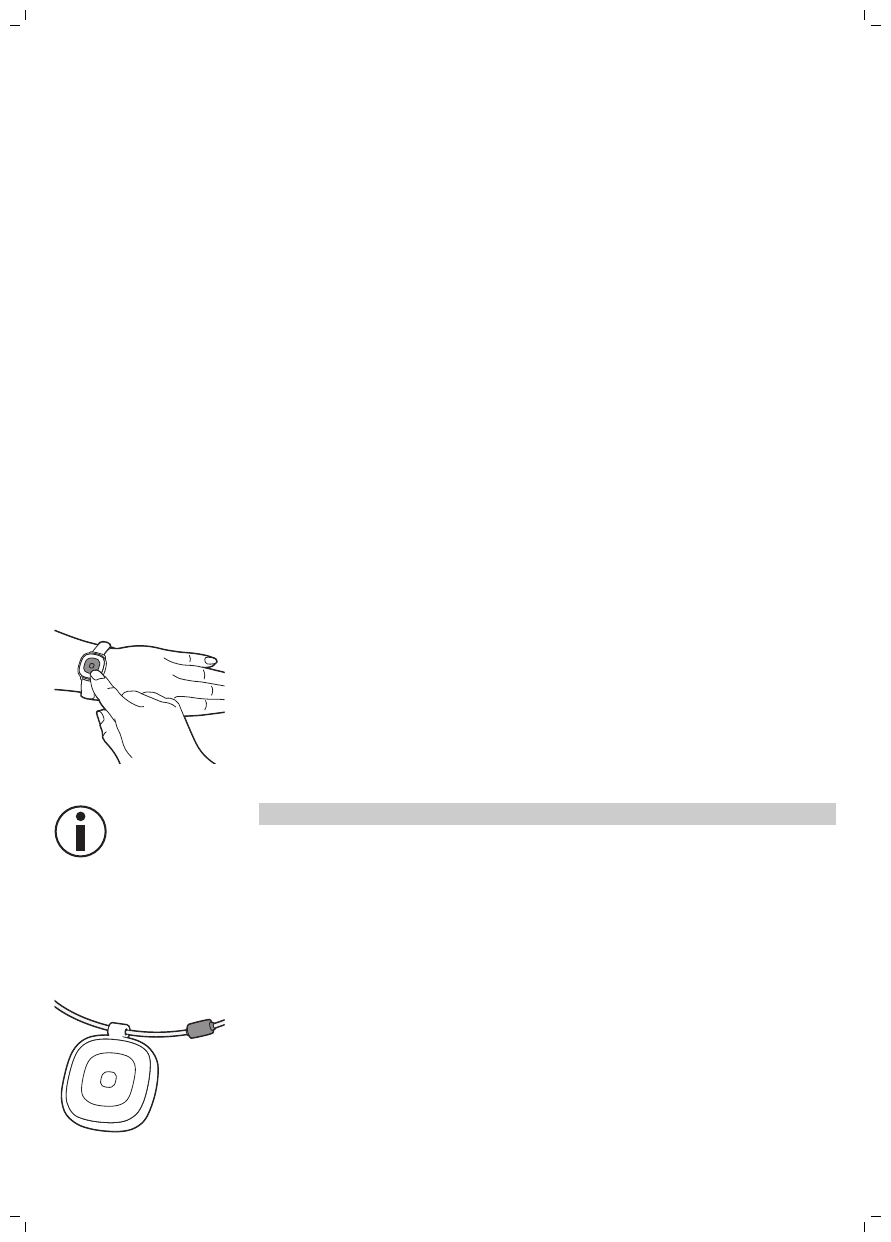
2Your communicator will dial the Lifeline response center.
3Once connected, a personal response associate will access your
profile and assess the situation. The associate speaks with you
through the communicator.
4If you need help, our associate will contact your list of responders
(i.e., a caregiver, neighbor, loved one) or emergency services in
accordance with your request.
5The response center will then follow up to confirm that help has
arrived.
What to expect if voice communication with a Lifeline Response
Associate is not established.
If we are not able to assess your condition, then our standard
procedure is to contact your listed responders. This can happen when
you are not able to speak or we cannot hear you.
Tips:
-Wear your Personal Help Button in your home at all times,
especially while sleeping, bathing or showering. The bathroom is
often a place where people fall and need help.
-You can wear your Personal Help Button when you leave your
home. However, the Personal Help Button will not work outside of
the range determined by the signal range test.
-Your Personal Help Button is not a microphone, so you don’t talk
into it. Instead, press the Personal Help Button. Your communicator
hears your voice.
-You may order additional Personal Help Buttons for other
members of your household. You can add the additional buttons to
your Lifeline Monitoring Service.
Note: Your Personal Help Button is water resistant and dust resistant.
Using the Personal Help Button with the neck cord
The following section is only applicable if you ordered a pendant.
Philips Lifeline neck cords has a special fuse. This fuse breaks away
under certain conditions. This break-away fuse reduces the remote
risk of strangulation. If the neck cord breaks apart, contact Philips
Lifeline or your representative for a replacement right away.
10 English
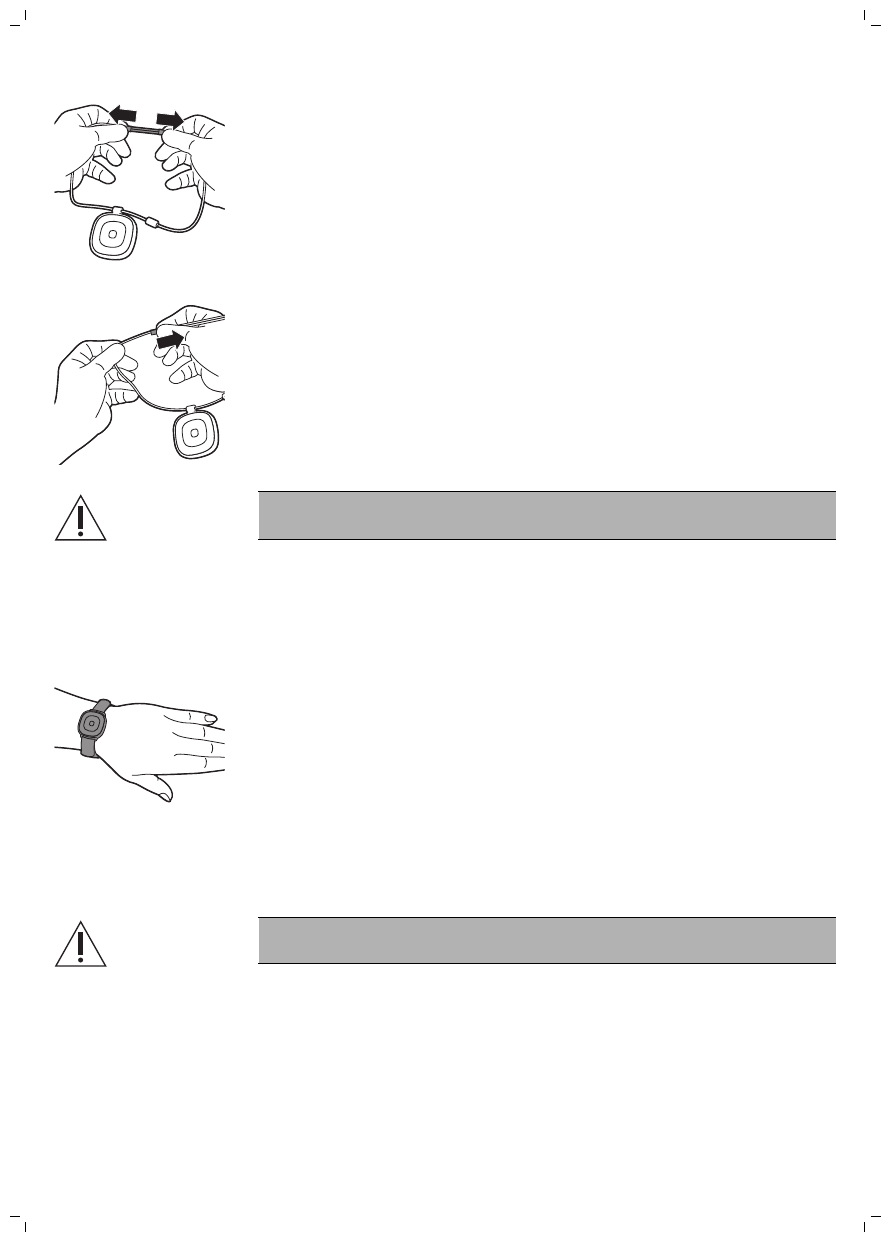
Adjust the length of the neck cord with the two tabs on the cord.
Shorten the neck cord by pulling on both tabs.
To lengthen the neck cord, hold the cord and pull one tab away from
the Personal Help Button.
Warning: Do not tie a knot in your neck cord. This may prevent the
breakaway feature from working properly.
Using the Personal Help Button with the wristband
The following section is only applicable if you ordered a wristband.
Place the wristband on your wrist. Adjust it, so that the fit is snug but
comfortable.
Cleaning
Caution: Clean the device and skin underneath the device regularly
to reduce the risk of skin irritation.
Your Personal Help Button is water resistant. You can submerge it in
warm water for easy cleaning. Clean it regularly to prevent skin issues.
1Wash your neck cord with a mild soap.
2Wash the Personal Help Button under warm running water. Be
careful not to accidentally press the help button. You may also
gently wipe your Personal Help Button with isopropyl (rubbing)
alcohol or a cotton pad moistened with alcohol. Do not soak the
Personal Help Button in alcohol.
11
English

3Remove excess moisture with a towel. Allow the Personal Help
Button to finish air-drying while you are wearing it.
4If you accidentally press your Personal Help Button during cleaning,
a help call is placed. Just tell the Lifeline response associate that
you accidentally pressed the button.
Storage
Store the device in a dry, dust-free place. Store it away from direct
sunlight or other heat sources. If you do not follow the storage
specifications (see 'Specifications'), it could lead to reduced operating
time of the button.
-When you stored the device at a low temperature, let the device
warm up at room temperature for approximately 15 minutes before
you use it.
-When you stored the device at a high temperature, let the device
cool down at room temperature for approximately 15 minutes
before you use it.
Maintenance
Batteries
The Personal Help Button has a built-in lithium battery. The battery
provides a long service life without the need for replacement or
recharging by the user. The user does not need to monitor the battery
life. This is done automatically by the Personal Help Button. The
Personal Help Button will send a low battery signal to Philips Lifeline
when there are about 30 days of battery life left. Philips Lifeline will
contact you to arrange for a replacement button.
It is important to start using your button as soon as you receive it. If
this is a replacement button, return your old button to Lifeline using
the envelope provided.
Note: The lithium battery within the Personal Help Button must be
disposed of properly. Do not discard the Personal Help Button in the
trash. Always return the Personal Help Button to Lifeline for proper
disposal.
Device service
The home communicator and the Personal Help Button are
manufactured to high quality standards. Philips Lifeline equipment
12 English
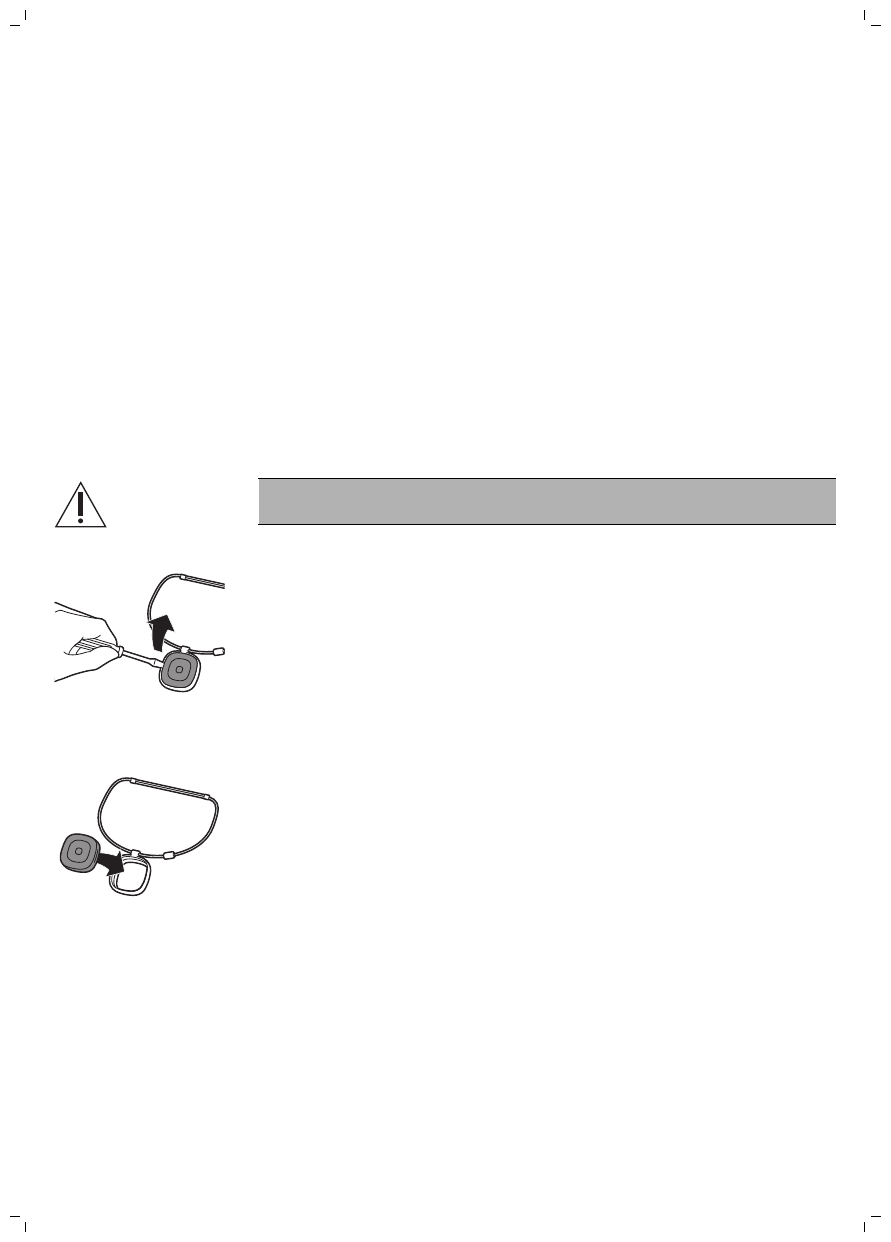
can only be factory-serviced by Philips Lifeline. Call Philips Lifeline for
information on service or repairs.
Replacement
There are no user-serviceable parts inside the device. Do not attempt
to open or modify the device.
When your Personal Help Button, neck cord or wristband is broken,
call Philips Lifeline (toll free 1-800-635-6156) to arrange for a
replacement. You can request a larger wristband if you need it.
Removing the button from the holder
If you want to change the wearing position from pendant to wrist
band or vice versa, you need to remove the button from the holder. If
you have to replace your neck cord or wrist band, you also need to
remove the button from the holder.
Caution: To avoid injury, be careful when you handle tools. Call
Lifeline if you need help (see 'Assistance').
1Remove the Personal Help Button from the holder using a small
flat-head screwdriver. Insert the screwdriver between the button
and the holder.
2Gently wiggle the screwdriver to pry out the button.
3Insert the button in the new holder of the wristband or pendant.
Push it down into the holder.
Replacing your Personal Help button
If you have received a replacement button from Philips Lifeline, you
need to set it up to work with your home communicator.
13
English
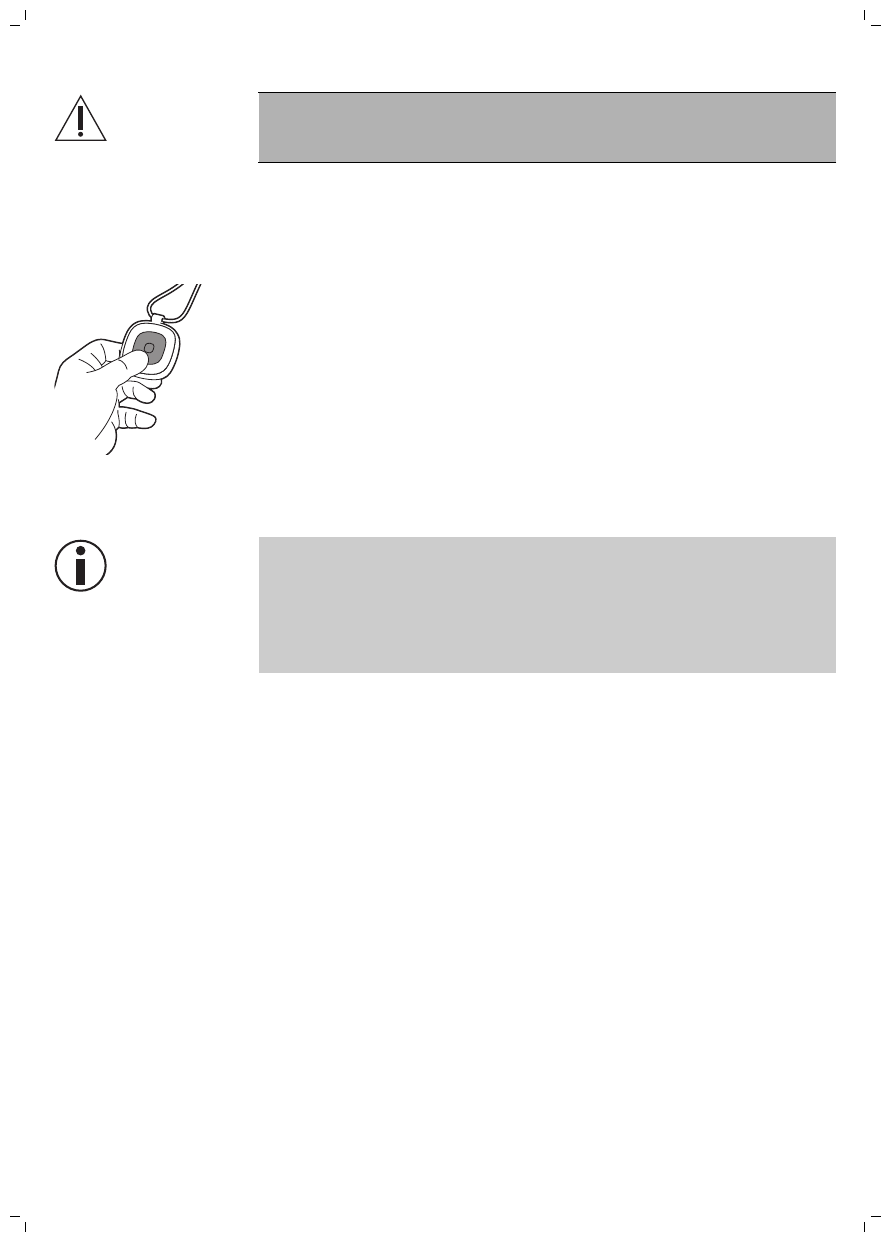
Warning: If your Personal Help Button is not set up correctly, your
help call will not be answered when you press the Personal Help
Button.
Activating your replacement button
1Make sure that your home communicator is ON. Press and hold
down the reset bar on the home communicator until it announces:
"start test".
2While holding down the reset bar on the home communicator with
one hand, press and hold the Personal Help Button until you hear a
long beep and the home communicator announces "Personal Help
Button, code XXX, programmed", where XXX are the digits
indicating the number of your Personal Help Button. Your Personal
Help Button is now activated. You can stop holding down the reset
bar on the home communicator.
3Press the reset bar on the home communicator once to exit the
test mode. The home communicator will beep three times and
announce 'end test'. You have now programmed one Personal Help
Button successfully.
Note: If you have two Personal Help Buttons in the home and are only
replacing one of them, you will still need to set up both buttons when
you are setting up the new button. Be sure to set up both buttons
during the same setup process. If you have successfully set up two
buttons, the ending message will be:'End Test'. There are two
Personal Help Buttons now programmed. Ready.
Disposal
The lithium battery within the Personal Help Button must be disposed
of properly. Dot not discard the Personal Help Button in the trash.
Always return the Personal Help Button to Philips Lifeline (see 'Device
service') for proper disposal.
Assistance
If you have any questions, please contact Philips Lifeline Subscriber
Services at 1-800-635-6156 in the United States or 1-800-387-1215 in
Canada.
Philips Lifeline
111 Lawrence Street
Framingham, MA 01702-8156
www.lifeline.philips.com
14 English
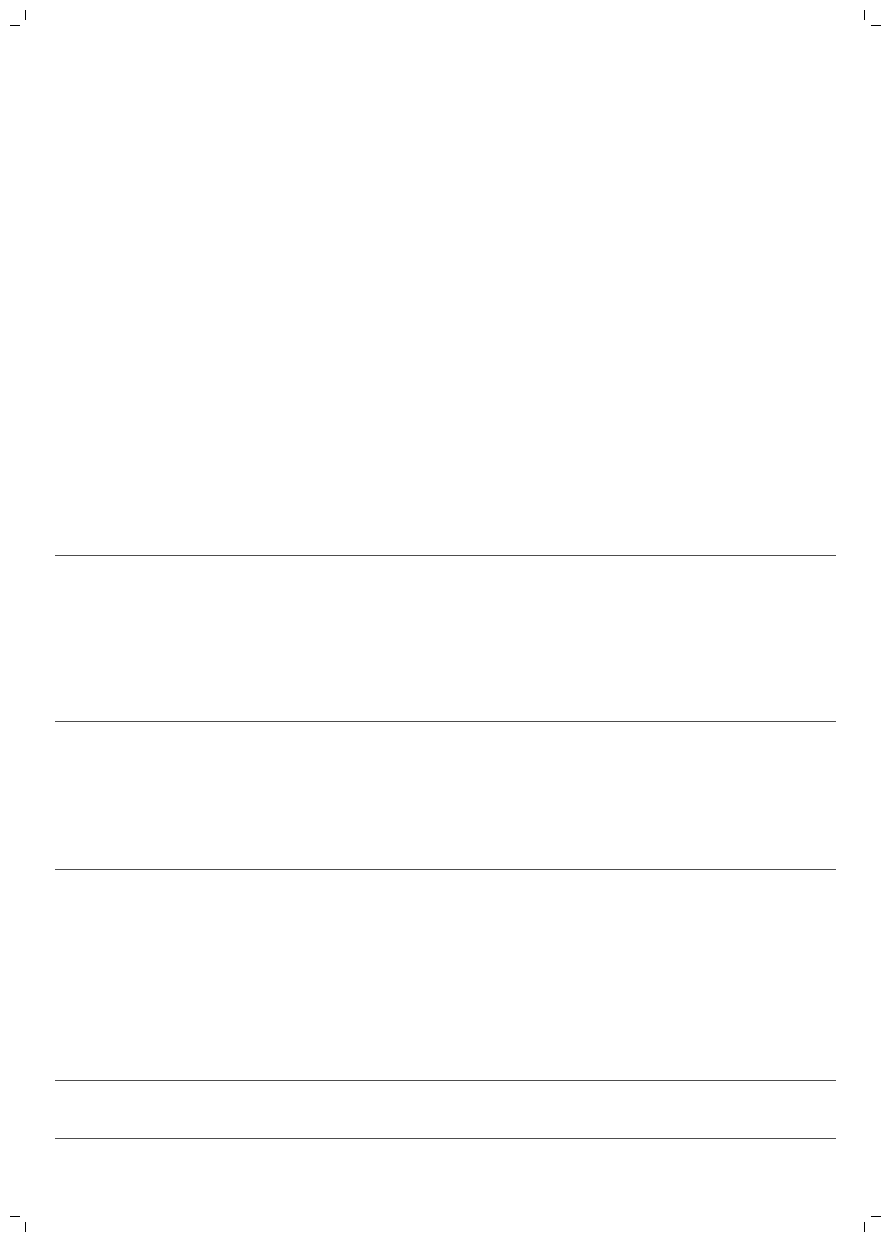
Philips Lifeline Canada
95 Barber Greene Road, Suite 105
Toronto, Ontario, Canada M3C 3E9
www.lifeline.ca
Online information is available 24 hours a day, 7 days a week.
Troubleshooting
The home communicator and Personal Help Button conduct self-tests
on a regular basis. If a problem is identified, the reset button on the
home communicator will start to flash. To find out what is wrong, push
the reset button. The home communicator will announce the problem
and tell you what to do.
If you have any questions about your home communicator, Personal
Help Button, or other aspects of the Philips Lifeline service, please
push your Personal Help Button or call Philips Lifeline.
Problem Possible cause / solution
My neck cord is worn
out / broken.
Do not use any neck cord, home communicator or accessories other
than the one provided with your Philips HomeSafe Medical Alert
system. Other neck cords may not provide the feature to break apart,
therefore increasing the risk of strangulation.
If your breakaway function is broken, do not tie a knot in your neck
cord but order a replacement. Contact Philips Lifeline for a
replacement of your neck cord.
I do not get a response
when I push my
Personal Help Button.
If you are in need of help, you can also push the help button on the
home communicator or call for help using your phone.
The home communicator and Personal Help Button conduct self-
tests on a regular basis. If a problem with the button is identified,
you will be contacted.
For a replacement of your button, please contact Philips Lifeline.
I do not get a response
when I push my
Personal Help Button.
If you are in need of help, you can also push the help button on the
communicator or call for help using your phone.
The signal between the Personal Help Button and the communicator
unit might be disturbed. Or you are using the button out of range of
your home communicator (inside or outside of your home).
To test the signal range in your home, you can perform a signal
range test. Please refer to the Lifeline home communicator user
manual for instructions on how to test the signal range, or contact
Philips Lifeline for assistance.
My wristband is worn
out / broken.
For replacement of your wrist band, please contact Philips Lifeline.
15
English

Problem Possible cause / solution
My wristband is too
small.
Please contact Philips Lifeline to order a larger wristband.
Frequently asked questions
Can I have more than one Personal Help Button for myself?
No, we have learned that subscribers are best served by having one
Personal Help Button.
Can I wear my Personal Help Button in the shower or bath?
Yes, the Personal Help Button is water resistant and should be worn
at all times. However, when the Personal Help Button is fully
submerged, the signal is weakened. The signal may not be received by
the home communicator.
Can I wear my Personal Help Button in bed?
Yes, we ask that you wear your Personal Help Button at all times when
you are in your home. The button was designed to provide adequate
protection against sending an accidental signal, even if you roll over
on it.
Can I wear my Personal Help Button under my clothes?
Yes, you can wear the Personal Help Button under your clothes. Make
sure that you can easily reach it if you need to call for help.
What if I accidentally hit my Personal Help Button?
If you accidentally push your Personal Help Button, a Lifeline
response associate will respond to your call. This is to make sure that
everything is okay. Just tell the associate that you pushed it
accidentally and that you do not need assistance. Do not worry that
you are bothering Philips Lifeline; we just want to be sure that you are
all right.
Does the Personal Help Button have a battery?
Yes, the Personal Help Button has a built-in battery. The battery
provides a long service life without the need for a replacement or
recharging by the user. The Personal Help Button will send a signal to
Philips Lifeline when the battery is low. Your Lifeline service provider
will contact you about a replacement.
Do I use the Personal Help Button to speak with Philips Lifeline?
No, the Personal Help Button is not a microphone. You do not speak
into it. The button sends a signal to the home communicator, which
then calls Philips Lifeline. You should speak in the direction of the
home communicator.
What happens if I make a help call and the response center can’t
hear me?
The Lifeline response associate will probably be able to hear you
through the highly sensitive microphone of your home communicator.
However, if you cannot be heard or if you cannot speak, Philips
16 English
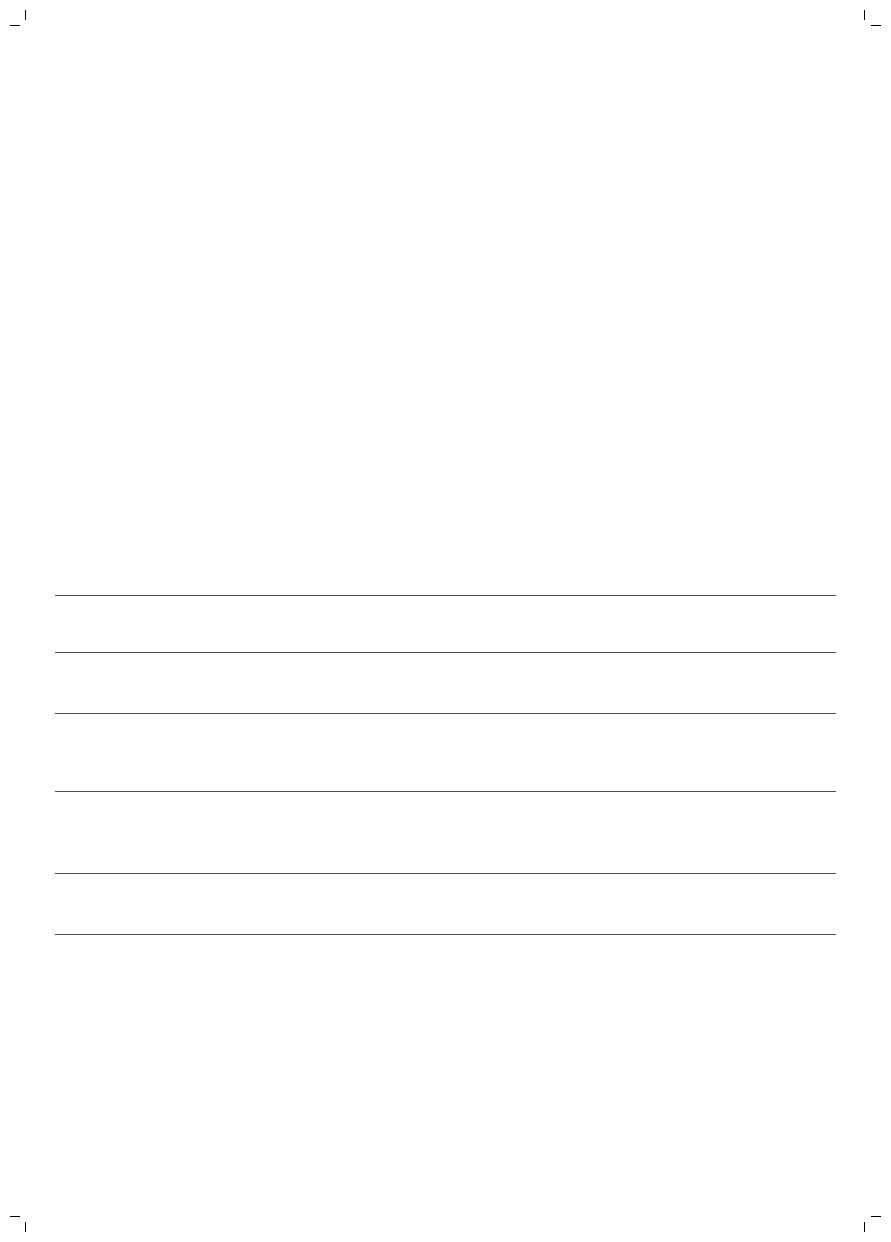
Lifeline will place a telephone call to your home. If no one answers,
help will be contacted.
What happens if I push my Personal Help Button and can’t hear the
response associate?
Stay where you are. The response associate will probably be able to
hear you, but if not, he or she will place a telephone call to your home.
If no one answers, help will be contacted.
Can I wear my Personal Help Button outside of my home?
Yes, but the Philips Lifeline service is not available if you are outside
the range of your home communicator.
Electromagnetic fields (EMF)
This Philips appliance complies with all applicable standards and
regulations regarding exposure to electromagnetic fields.
Electromagnetic emissions and immunity
The device is approved according to EMC safety standard EN
60601-1-2, edition 4, emission class B, group 1 and is tested according
to the following immunity test levels:
Immunity test IEC 60601-1-2:2014
Home
Healthcare
ESD
IEC61000-4-2
±8 kV contact discharge
±2, 4, 6, 8, 15 kV air discharge
Radiated RF fields
IEC 61000-4-3
10 V/m
80 MHz - 2.7 GHz
80% AM 1 kHz
Proximity fields from
wireless transmitters
IEC 61000-4-3
9 V/m to 28 V/m
15 Spot frequencies (MHz): 385, 450, 710, 745, 780, 810, 870, 930,
1720, 1845, 1970, 2450, 5240, 5500, and 5785 MHz
50/60 Hz magnetic fields
IEC 61000-4-8
30 A/m - 50 or 60Hz
It is designed to be used in typical domestic environments.
Industry Canada Compliance Statement
This device complies with Industry Canada’s licence-exempt RSSs.
Operation is subject to the following two conditions:
1This device may not cause interference, and
2This device must accept any interference, including interference
that may cause undesired operation of the device.
17
English

RF exposure statement
This device complies with the safety requirements for RF exposure in
accordance with RSS-102 Issue 5 for portable use conditions.
FCC Compliance Information
This device complies with part 15 of the FCC Rules. Operation is
subject to the following two conditions:
1This device may not cause harmful interference, and
2This device must accept any interference received, including
interference that may cause undesired operation.
Radio interference
This equipment has been tested and found to comply with the limits
for a Class B digital device, pursuant to Part 15 of the FCC Rules. These
limits are designed to provide reasonable protection against harmful
interference in a residential installation. This equipment generates,
uses and can radiate radio frequency energy and, if not installed and
used in accordance with the instructions, may cause harmful
interference to radio communications. However, there is no guarantee
that interference will not occur in a particular installation.
If this equipment does cause harmful interference to radio or
television reception, which can be determined by turning the
equipment off and on, the user is encouraged to try to correct the
interference by one or more of the following measures:
-Reorient or relocate the receiving antenna.
-Increase the separation between the equipment and receiver.
-Connect the equipment into an outlet on a circuit different from
that to which the receiver is connected.
-Consult the dealer or an experienced radio/TV technician for help.
Do not attempt to repair or modify this equipment.Any repairs or
alterations made by the user to theequipment may void the warranty
and complianceof the equipment. Changes or modifications madeto
this equipment not expressly approved byPhilips may void the FCC
authorization tooperate this equipment.
RF Radiation exposure statement
This equipment complies with FCC RF radiation exposure limits set
forth for an uncontrolled environment. For wrist-worn operation, this
equipment has been assessed and meets the FCC RF exposure
guidelines for portable devices.
18 English
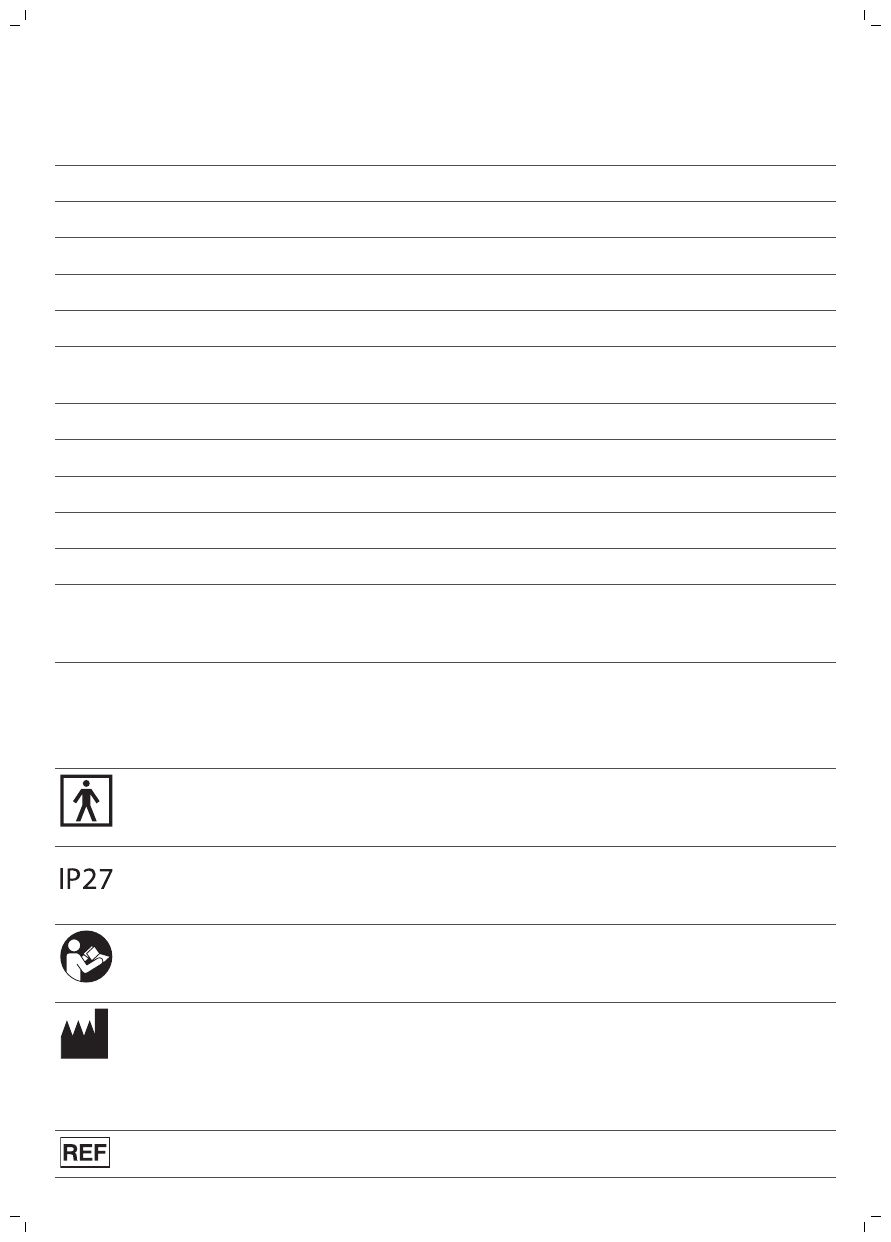
Specifications
Operating temperature From 5°C to + 40°C (From 41°F to 104°F).
Relative operating humidity From 15% to 90% (non-condensing).
Operating pressure From 700hPa to 1060 hPa.
Storage temperature From -25°C to +70°C (-13°F to +158°F).
Relative storage humidity Up to 90 % (non-condensing).
Mode of operation Continuously
Battery Internally powered, CR2032 Lithium 3V battery, non-
replaceable.
Service life 5 years
Medical device classification FDA Class II exempt (only in USA)
Frequency 312.0 MHz
Transmit Power +5 dBm
Modulation On-Off Keying
Materials Button: ABS, TPE
Neck cord: Latex-free Nylon, POM
Bracelet: Velcro
Explanation of symbols
Symbol Description
This symbol indicates the part of the device that comes into physical contact
with the user (also known as the applied part) is of type BF (Body Floating)
according to IEC 60601-1. The applied part is the Personal Help Button.
This symbol indicates that the parts inside the device cannot be touched by
fingers or with objects larger than 12.5 mm and the device is protected against
water ingress up to 1 m submersion.
This symbol (which may be black or blue) means that you have to read the
user manual carefully before you use the device. Save the user manual for
future reference. This symbol may appear in blue.
This symbol indicates the manufacturer.
For US: Manufactured for: Philips Lifeline, 111 Lawrence Street, Framingham,
MA 01702 USA;
For Canada: Manufactured for: Philips Lifeline Canada, 95 Barber Greene
Road, Suite 105, Toronto, Ontario, Canada M3C 3E9.
Indicates manufacturer's catalog number of the device.
19
English
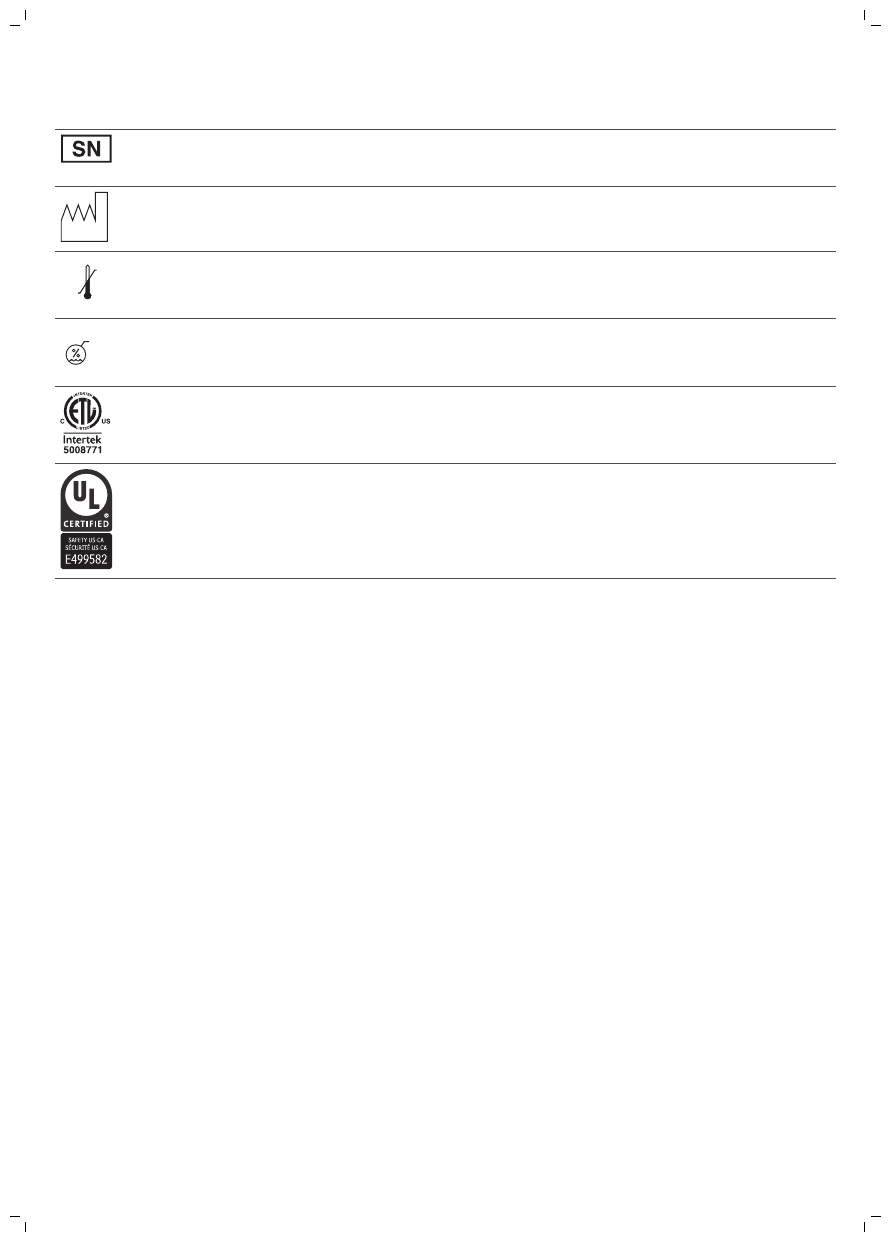
Symbol Description
Indicates the manufacturer's serial number so that a specific device can be
identified.
Indicates manufacturing date.
–13°F
–25°C
158°F
70°C
This symbol indicates the storage and transportation temperature limits to
which the device can be safely exposed: -25°C to +70°C (-13 °F to +158 °F).
<90%
This symbol indicates the relative humidity range for storage: up to 90%
(non-condensing).
The ETL Listed Mark is proof that your product has been independently
tested and meets the applicable published standard.
UL listing mark for Canada and the United States.
20 English

empty page before backcover

Specifications are subject to change without notice.
All rights reserved.
Signal range may vary due to environmental factors.
© 2018 Koninklijke Philips N.V.
In US manufactured for:
Philips Lifeline, 111 Lawrence Street, Framingham,
MA 01702 USA;
In Canada manufactured for:
Philips Lifeline Canada, 95 Barber Greene Road, Suite 105,
Toronto, Ontario, Canada M3C 3E9.
3000.023.2662.1 Rev 0.14 (7/31/2018)
>75% recycled paper
>75% papier recyclé
